The currencies of different countries are interesting in that they have their own history, development, material, manufacture and face value, despite the majority of them being tied to the dollar, euro or financial unit of a neighboring state. The currency of Vietnam is called dong. Control over the issue and trends in the global market is carried out by the local Central Bank. The existence of money in its current form started in 1946. It is worth noting that during this time they underwent several structural changes, including changing the material from which they are made. With the development of tourism infrastructure in Asian country many travelers who are going to visit the sights of the state are asked the following urgent questions:
- What is a Vietnamese dong?
- What are the conditions for transporting currency at the border.
- Is there a circulation of bank cards in the country?
- How much money is allowed to import and export.
This and other important nuances associated with the local currency will be discussed in the article.
Origin history
The name of the currency is translated from the local dialect as bronze or copper. This is due to several interesting historical factors. At a time when the country belonged to French Indochina, piastres were in use. Residents called them dong. After gaining sovereignty, the monetary unit of Vietnam of its own production began to be called "dong", so as not to depart from the traditional "name" of the means of payment. Currently, sixteen types of banknotes are in circulation in the territory of the Asian state.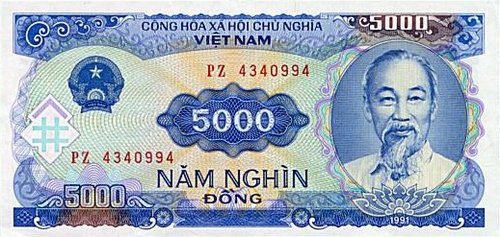 Moreover, only the smallest denomination of notes (10, 5, 2, 1) does not have an image of the legendary leader Ho Chi Minh. Starting from Dong 20, a portrait of a Vietnamese politician is on every paper note. The issue of a payment instrument changed several times, primarily due to wear and tear. The current set of denominations has been available since 1985. In 2006, the issue received better material: the currency of Vietnam acquired additional protective properties and a polymer basis. At the moment, it is the thinnest plastic, without a cotton base.
Moreover, only the smallest denomination of notes (10, 5, 2, 1) does not have an image of the legendary leader Ho Chi Minh. Starting from Dong 20, a portrait of a Vietnamese politician is on every paper note. The issue of a payment instrument changed several times, primarily due to wear and tear. The current set of denominations has been available since 1985. In 2006, the issue received better material: the currency of Vietnam acquired additional protective properties and a polymer basis. At the moment, it is the thinnest plastic, without a cotton base.
Key features and designations
In addition to the image of Ho Chi Minh, on the banknotes you can see the national emblem of the country and the most famous attractions. The main colors of cash are purple, red and purple shades. Has a Vietnamese dong in circulation and coins (5000, 2000, 1000, 500, 200), but at the moment they are gradually withdrawn from free access.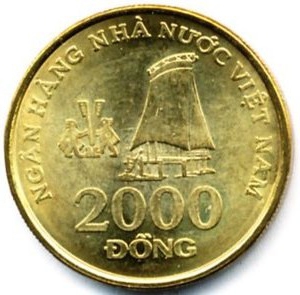 In addition to local money, you can pay with the currency of the EU, China, Japan and the United States. Moreover, the American dollar does not even need to be changed. The tourist will easily receive change in dongs, provided that the bills are of good quality. Vietnam’s money on the world exchange is denoted by the acronym VND.
In addition to local money, you can pay with the currency of the EU, China, Japan and the United States. Moreover, the American dollar does not even need to be changed. The tourist will easily receive change in dongs, provided that the bills are of good quality. Vietnam’s money on the world exchange is denoted by the acronym VND.
How and where to exchange
You can transfer your own funds from the available currency to the necessary money in traditional places that every tourist knows:
- Airport. It is worth noting that local points offer an acceptable rate for almost every foreign equivalent.
- Hotel. Here the exchange is already worse. It’s better to go deep into the country, city, settlement and find a more suitable option.
- Miscellanea. This includes classic places: bank branches, postal services, large retail chains, travel agencies.
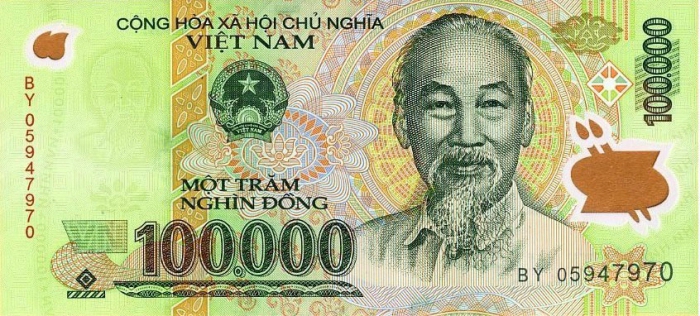
Of course, Vietnam's safest currency is found only in official institutions. Therefore, it is strictly not recommended to contact institutions that raise doubts about their activities.The best deals in large cities can be seen in jewelry stores and city banks. When exchanging, you need to pay attention to the presence of zeros on the banknote, because due to the high denomination and the uniform color scheme, you can become a victim of fraud, intentional or accidental.
Do you need plastic cards in Vietnam
Bank cards are accepted in the country, but in most cases they should be issued by a company with a worldwide reputation (Visa, Master Card). Restaurant, shopping mall, hotel - everywhere you can count on bank transfer. But it is worth remembering that all institutions accepting payments of this type are primarily involved in serving tourists. The local small institutions will need the currency of Vietnam. At the same time, the price for residents and visitors is almost the same.
There are ATMs in large settlements, but the main disadvantage of this service is a huge commission. Given the overvalued rate, it is better to use an official exchange office and spend money for your pleasure. Another important nuance is the mandatory writing of a statement in the Russian Bank about the possibility of using the card, otherwise it will be blocked at the first attempt to withdraw cash. This is done to ensure the safety of the client with increased activity of fraudsters in the Asian state. In addition, before the trip, it is better to study all potential exchange rates. The Vietnamese dong is too high a rating to apply to cashing without regard to security measures.
What currency is better to use
The most common types of cash in the territory of the Asian state are rightfully considered to be euros, dollars, yuan, baht and yen. The most prestigious and attractive of this list are American payment units. They can be paid in a large market or in retail chains. At the same time, only the currency of Vietnam is issued for surrender. Do not disdain an alternative option and taxi drivers who accept as payment almost any money from the above list.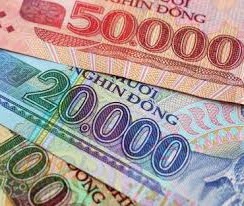
Courses
The following fact is interesting: any local resident can call himself a millionaire due to the high face value of banknotes. To date, the Vietnamese dong relates to the dollar approximately like this: 21900 to 1.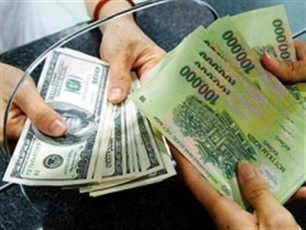 For one euro, a tourist will receive more than 24 and a half thousand local money, and for the Russian ruble - 340 VND. At the same time, the rate is regularly changed by the Central Bank of the country (monthly), and at different exchange points it may differ from the officially declared indicator.
For one euro, a tourist will receive more than 24 and a half thousand local money, and for the Russian ruble - 340 VND. At the same time, the rate is regularly changed by the Central Bank of the country (monthly), and at different exchange points it may differ from the officially declared indicator.

